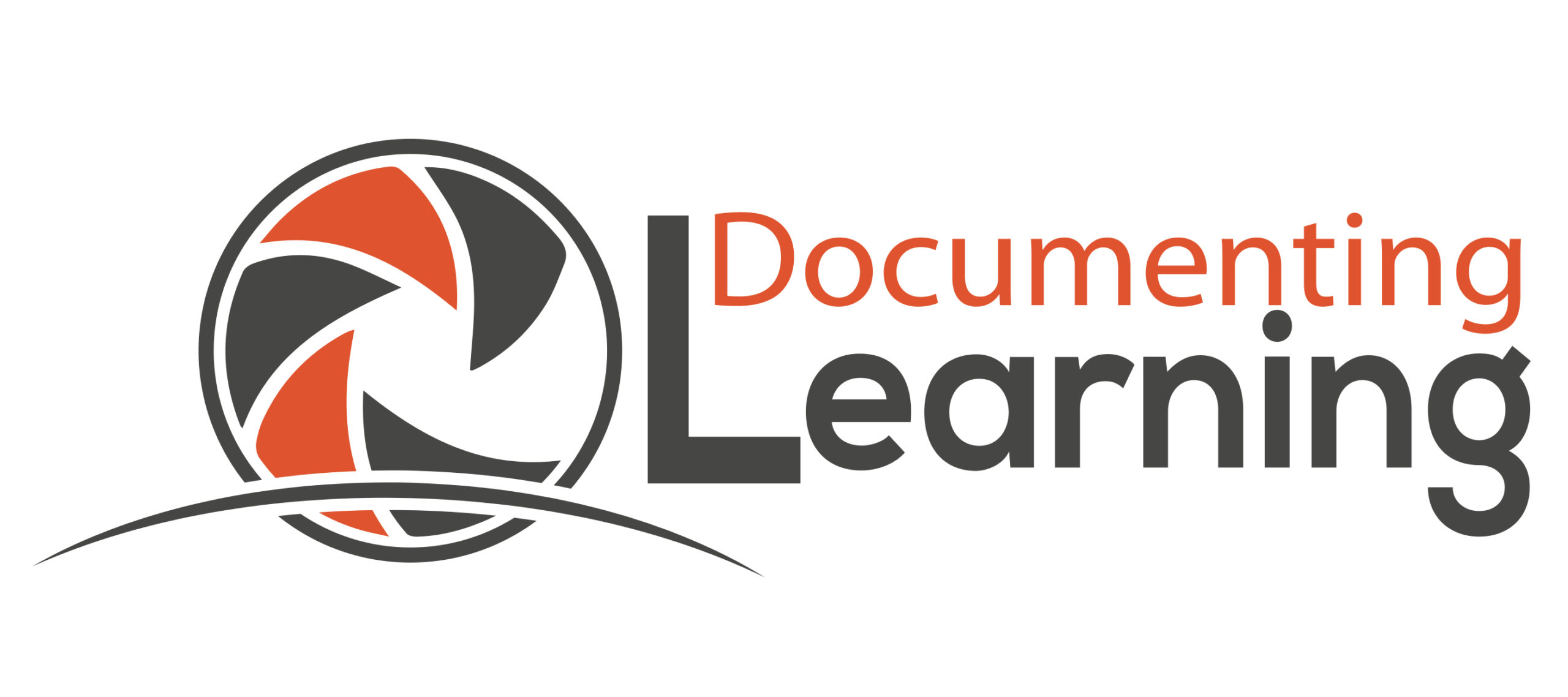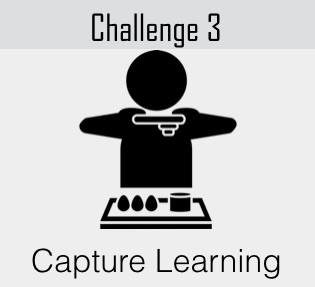Capturing learning is one of the learningflow routine steps of the documenting learning framework featured in our book, A Guide to Documenting Learning. Without capturing learning, it is not possible to share, or to amplify learning. There needs to be tangible evidence of the invisible.
Capturing can be misunderstood as simply a “moment in time” video or audio recording, shooting a photograph, or writing down an anecdote. Capturing learning with documenting FOR or AS learning in mind needs to take it a step further—beyond “what happened” to capturing the stages of learning or process components of the learning.
In A Guide to Documenting Learning we remind readers:
While anyone can document a moment in time by recording a video, taking a picture, or writing down verbatim what is being said during a conversation, documenting the learning needs to be strategic and purposeful. A learner needs to be aware of what type of learning evidence he or she accepts and desires to capture. Teachers and students need to learn how the sharing of their documenting affects the quality of their documentation. Skills need to be developed to aid learners in understanding how media tools and platforms aid in capturing and sharing learning, as well as how media choices affect one’s ability to demonstrate thinking and learning visibly and/or auditorily.
Therefore, you need to ask yourself:
- How does learning look like initially and over time?
- How can the pre-determined learning focus be captured to let others see what you are seeing, hearing, and/or recognizing?
- What are the different stages or components of the learning process going to be, and how can you best capture each one to convey a better picture and understanding of the entire process?
In Challenge 3 you will experiment with a variety of media, techniques, platforms, or tools to capture learning, always strategically keeping your learning focus and goal in mind.
What you choose to capture could be specific to a:
- learning process that involves a series of steps (e.g., create an infographic that captures the steps)
- learning goal (e.g., create an audio recording of reading a passage using different “voices” for the characters and narrator)
- reflection of learning (e.g., a teacher or student highlighting the student’s mathematical reasoning by annotexting images or video segments)
- school’s mission statement (e.g., capturing visible actions that represent values, such as kindness or cultural empathy, through annotexted images or video segments)
Plan to capture learning by experimenting with different media types:
- text
- audio
- images
- video
- transmedia (narrative that extends beyond multiple media forms that also plays to the strength of those forms – T. Heick)
Plan to explore with one or all of these tools to aid in capturing the learning:
- Flipgrid
- PicCollage
- Clips (iOs) (or your native video editing app)
- Skitch
- Paper
- Adobe Sparks Video
- Audio Memo (iOS) (or your native audio recording app)
Here are some possible techniques to capture the learning:
- timelines
- collages
- hyperlinked writing
- voice-overs
- annotexting
- visible thinking routines
- interviews
- reflective monologues
- narratives
To recap, follow these steps to complete this challenge:
- Articulate your (or your students’) focus and goal. Plan how you intend to capture evidence of the learning as documentation artifacts using a variety of media.
- Capture and reflect on the best evidence of learning and create reflective artifacts that convey the learning process (which could involve misconceptions being revised or moving from basic understanding to transfer application).
- Write a new blog post, including a narrative as to what you learned from this challenge’s experience of capturing learning that best provides reflective learning-thinking artifacts to aid your/your students’ learning, as well as embedding the documentation artifacts appropriately.
- Title, save, and publish your post.
After you have completed your challenge to create a Capture Learning blog post, please include the URL link to your post in the Leave a Reply comment section below to share with us and your documenting community. Check back regularly to see what others have posted!
Added Amplification: Tweet or share on Instagram the link to your Capture Learning blog post. Be sure to include the hashtags #documenting4learning and #DLBloggingChallenge3, as well as any appropriate hashtags for your selected topic.
Here are a few examples of blog posts where the authors captured learning to get you inspired to create your own:
- Visible Thinking Routines, QFT, research, headlines and CSI at Environmental Ed by Evelyn Mahler
- Beginning Research with Kindergarteners by Karin Hallett
- When a Blogger Writes a Book by Silvia Rosenthal Tolisano

